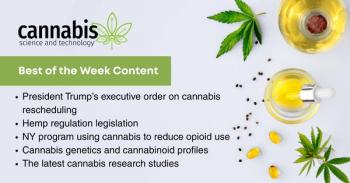
NASDA Reignites Support for Hemp 1.0% THC Limit Increase
NASDA has reignited their support to raise the THC limit for hemp to 1.0%.
The United States (US) cannabis industry has faced challenges regarding tetrahydrocannabinol (THC) limits set from the 2014 Farm Bill and then remained in the 2018 Farm Bill (1). One of the key US farming associations is bringing the topic of a THC limit back onto the drawing board to be discussed. The National Association of State Departments of Agriculture (NASDA) has reiterated their support to increase the THC limit for industrial hemp crops to be 1.0% (1). The current regulation stated in the 2018 Farm Bill is for industrial hemp crops to have no more than a 0.3% THC limit (2). By increasing the amount, NASDA believes that cultivators would have additional opportunities in deciding what varieties they grow (1). As mentioned in HempToday (1), “NASDA represents state agriculture officials in all 50 states and four U.S. territories.”
In 2020, Kentucky Senator, Rand Paul, introduced the Hemp Economic Mobilization Plan Act, which was supported by NASDA (1,3). With the delay of the 2023 Farm Bill (1,4), industry stakeholders are now stuck waiting until Fall 2024 to see any changes on THC percentage limits.
Prior to and when the 2018 Farm Bill first was passed, the hemp industry has consistently urged for an increase regarding THC limits and has claimed that these regulations were created from past research that is out of date (1). If the limit is raised, this would additionally provide options for future research and the development of cultivars. For example, flowers, fiber, and grain (1).
A study performed in the 1970s by Canadian plant scientists, Ernest Small and Arthur Cronquist, for the International Association of Plant Taxonomy (1), was acknowledged in 1987 and set the precedence of dry weight from hemp flower material, which then created some differentiation between C. Sativa (industrial hemp) and C. Indica (cannabis). In a later revelation discussed in HempToday, Small discussed that both his and Cronquist’s findings were subjective (1).
Along with NASDA, an estimated 30 hemp industry groups are also reigniting the spark to increase the THC limit (1).
References
- HempToday. Key U.S. Farming Group Restates its Support for Raising Hemp THC Limit to 1.0%
https://hemptoday.net/key-u-s-farming-group-restates-its-support-for-raising-hemp-thc-limit-to-1-0/ (accessed Jan 25, 2024). - Abernethy, A. Hemp Production and the 2018 Farm Bill
https://www.fda.gov/news-events/congressional-testimony/hemp-production-and-2018-farm-bill-07252019 (accessed Jan 25, 2024). - HempToday. Proposal in USA Would Lift THC Barrier for Hemp to Full 1.0%
https://hemptoday.net/proposal-in-usa-would-lift-thc-barrier-for-hemp-to-full-1-0/ (accessed Jan 25, 2024). - Colli, M. 2018 Farm Bill Extended Throughout 2024
https://www.cannabissciencetech.com/view/2018-farm-bill-extended-throughout-2024 (accessed Jan 25, 2024).
Newsletter
Unlock the latest breakthroughs in cannabis science—subscribe now to get expert insights, research, and industry updates delivered to your inbox.




